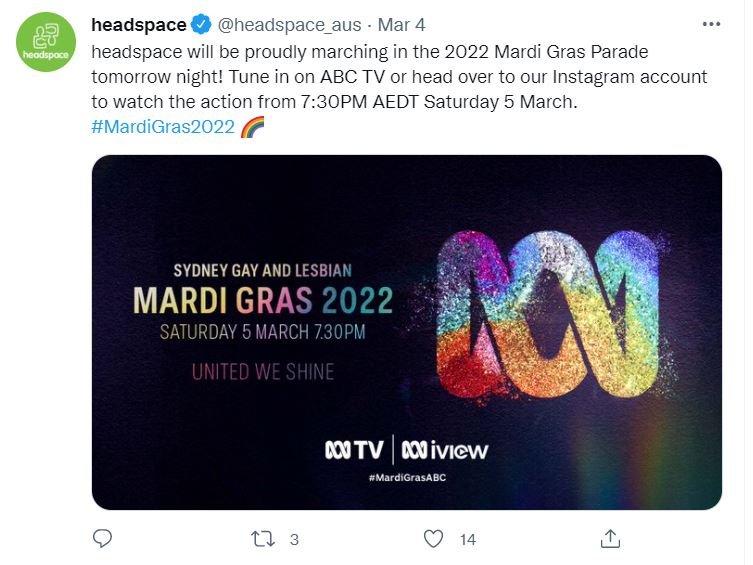What do Australia’s youth mental health organisations stand for?
At 32, on most (any) measures, I don’t fit the category of “youth”. In fact, I have a WhatsApp group set up to provide translations for me for new words from young people and I talk a lot more about my back these days.
Nevertheless, I feel like I have enough of a whiff of youth – and enough contact with some spectacular young people - to reflect on some concerning trends in youth mental health.
The last couple of years have provided no shortage of stressors to young people’s mental health and wellbeing. In the last six months alone we have seen same-sex attracted and trans people fighting for their rights during the Religious Discrimination Bill debate, First Nations people deal with daily examples of systemic racism including death at the hands of police (with no convictions and poor coverage), women continue to experience hate-speech online due to outdated gender-norms. The earth is on fire, but also flooding, as we live in a climate that buckles under our oppressive force. Australia is getting harder to live in, as the Prime Minister says. People with a disability know that the negative currents of these changes disproportionately drag on them.
For people working in mental health, the social and socio-legal determinants of health and mental health are well-established. Models such as the minority stress model speak to how discrimination and violence, such as those faced by the LGBTIQA+ community, but also people of colour, “gets under the skin”. Evidence of this is seen in appalling differences in mental health outcomes from privileged folk (like myself) and those from marginalised communities. There are different responses to this distress (and all are necessary). One is to provide treatment at the point of distress. Another, that myself and others have written about, is the need to invest in the community to deal with distress.
But beyond this, one of the most preventative actions we can take is to call out and address discrimination and violence against marginalised communities, whenever it happens.
This is where my concern with leadership from youth mental health organisations such as Headspace stem from. To be clear, I have met and worked with many people in youth mental health, including young activist who continue to challenge me (see a spectacular interview here), and nothing here should denigrate their action. I also don’t wish to speak for young people from marginalised communities, and would be gladly corrected by them. Rather, my aim is to say their presence and action should be better reflected in the leadership of organisations such as Headspace (or Orygen), who lack representation from young people on their leadership (Headspace appear to have great advisors to the board, but their voting rights/governance responsibilities are unclear).
But what is my more targeted criticism? While governments, and notably the Commonwealth government, continue to deploy policies and political narratives that marginalise communities, youth mental health organisations remain silent. While they are silent on the marginalisation and discrimination, they continue to receive funding from the Commonwealth government for the downstream consequences of that marginalisation and discrimination: mental health issues, suicide and distress.
Example tweet: https://twitter.com/headspace_aus/status/1499604304281636869
How did I form this view? It has been a feature of the growing expansion of youth mental health organisations for some time, but I tested my theory. In the period between December 2021 and March 2022, when several of these debates were receiving national attention, Headspace had zero media releases noting their stance on the rights of LGBTIQA+ young people, the need for justice for First Nations people who die at the hands of police, or the impacts of climate change on young people and the need for change. At the same time Headspace’s five media releases with three releases either commending or calling for Commonwealth funding of their services.
Social media tells a similar, if more complex picture. On the topic of First Nations’ justice, there has been a tweet on closing the gap, but there have been no tweets during this time on the issues of concern for First Nations communities, such as police accountability or constitutional change.
Similarly, there were posts celebrating Mardi Gras. However there was no discussion on the rights of LGBTIQA+ people during the Religious Discrimination Debate.
There were no tweets for International Women’s Day, but I note that they have also been silent on issues of gender-based violence or gender-equality during this period. There have been multiple tweets with and photos with Commonwealth government Ministers and MPs.
This absence leaves the organisation open to criticisms that it accepts money from the abusers of minority groups, but leadership does little to stand up for those communities when it matters. Such advocacy is understandably difficult. Not-for-profit organisations’ independene has been challenged as they require more and more government funding, and charity laws are also tightening. This creates a vicious systemic feedback loop that occurs here where government policy carves open emotional wounds and takes lives, with bandaids applied through down-the-line mental health funding.
Nevertheless, the youth mental health space appears to me as one of the most glaring examples of where the leadership is not by young people, and the leadership is not talking about the things that young people tell me they care about. I would gladly provide a correction to any of this, but I ask that youth mental health leaders consider how they can address issues of representation and integrity on the issues that matter to, and affect the mental health of, young people.
